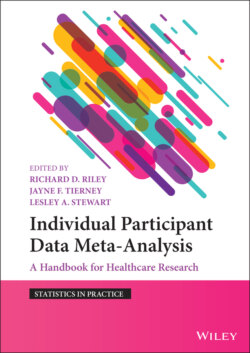Читать книгу Individual Participant Data Meta-Analysis - Группа авторов - Страница 89
4.5.2 Initial Checking of IPD for Each Trial
ОглавлениеWhen IPD are received for a trial, and often before processing the data further, it is worth conducting some preliminary checks. For example, it is useful to confirm that all the participants randomised appear to have been included, and check that there are no obvious omissions or duplicates in the sequence of participant identifiers (if they have been provided). Similarly, it is helpful to check which outcomes, baseline covariates and other variables are included in the IPD, and whether any that are ‘missing’ were truly not collected in the trial (called systematically missing variables; Chapter 18) or were recorded, but not included in the IPD supplied. If the latter, then either more complete IPD should be requested again, or a full explanation for non‐provision sought.
For time‐to‐event outcomes, it is worth checking that the extent of follow‐up for each trial is sufficient for the condition and outcome of interest, and encouraging trial investigators to supply up‐to‐date follow‐up information where possible.7 Although short follow‐up may not introduce bias, it might prevent a trial, and therefore an IPD meta‐analysis, picking up benefits or harms of interventions that take a long time to accrue, such as late side effects of treatment or late recurrence of disease. For example, in an IPD meta‐analysis evaluating the addition of chemotherapy local treatment for soft tissue sarcoma,102 the median follow‐up for survival was reported for seven of the included trials as being between 16 and 64 months,46 which is rather short for this type of cancer. Trial investigators supplying IPD were asked to provide updated information, which extended the median follow‐up for these trials to between 74 and 204 months,46 and thus allowed a more reliable examination of the effects of chemotherapy in the long term (Figure 4.5).102 Such updating may not be necessary if most or all events have already occurred, and may not be feasible if, for example, studies are very old, no longer obtaining follow‐up information, or resources are limited.
Figure 4.5 Median follow‐up based on published aggregate data compared to updated obtained IPD for seven trials included in an IPD meta‐analysis of adjuvant chemotherapy for soft tissue sarcoma.46
Source: Stewart et al.46, © 2006, John Wiley & Sons.
While ideally these checks should make use of database or statistical code, the value of scanning the data by eye should not be underestimated, as it can help members of the central research team get a feel for the trial as a whole, and even highlight unusual patterns or peculiarities.
